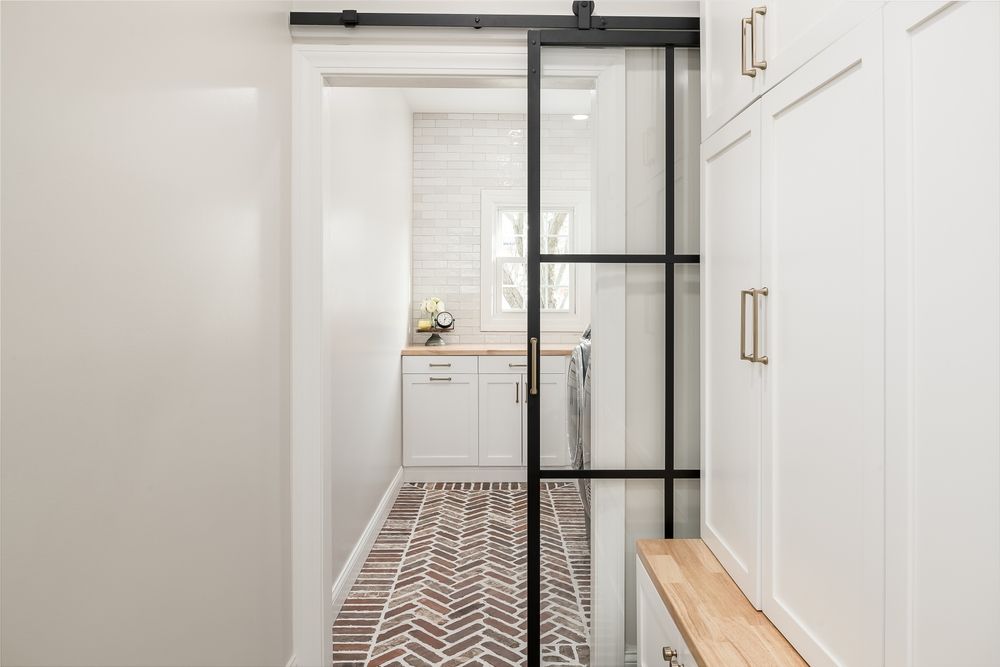Understanding Different Ladder Types
Before plunging into the world of ladders, it's essential to understand the different types:
Step Ladders:
These are A-frame ladders, self-supporting, and are perfect for jobs in the middle of rooms or outside where there's no support to lean on. Step ladders come in various sizes, from compact 3-foot models to larger 8-foot or even 12-foot options, catering to a wide range of tasks. They often feature a foldable design for easy storage and transportation, making them a versatile choice for indoor and outdoor use.
Extension Ladders:
Typically used for outdoor tasks, these ladders can be extended to reach higher places, like rooftops. Extension ladders are essential for tasks such as cleaning gutters, painting high walls, or accessing elevated outdoor areas. They are available in various lengths, with common options ranging from 16 to 40 feet or even longer for professional use.
Multipurpose Ladders:
These ladders are known for their versatility. They can be transformed into step ladders, extension ladders, or even scaffold platforms, making them suitable for a wide range of tasks. Multipurpose ladders are often adjustable, allowing you to configure them to match the specific job at hand. They are an excellent choice for homeowners who want a single ladder that can adapt to various situations.
Step Stools:
While not technically ladders, step stools are short and handy for reaching slightly elevated spaces like top kitchen shelves, changing light bulbs, or accessing items in closets. They are typically compact and lightweight, making them easy to move around the house. Step stools are available in various materials, including plastic, wood, and metal, offering options for different preferences and aesthetic considerations.
Materials Matter
Ladders can be made from various materials, each offering distinct advantages:
Aluminum:
Aluminum ladders are known for their lightweight nature, making them easy to carry and maneuver. They are also resistant to rust, which is particularly beneficial for outdoor use. However, it's essential to note that aluminum is a conductor of electricity, so aluminum ladders are not suitable for tasks near power lines or electrical work.
Fiberglass:
Fiberglass ladders are heavy-duty and non-conductive, making them a safer choice for electrical work. They are known for their durability and resistance to corrosion. Fiberglass ladders are often preferred by professionals who prioritize safety when working around electrical systems.
Wood:
Wooden ladders, while non-conductive like fiberglass, are susceptible to wear and tear over time. It's crucial to ensure that a wooden ladder is treated to withstand the elements if used outside. Regular maintenance, such as sealing and varnishing, can extend the lifespan of a wooden ladder. Wooden ladders are often chosen for their classic appearance and traditional craftsmanship.
Weight Capacity is Crucial
Ladders come with weight ratings which determine the maximum load they can safely support:
Type III (Light Duty):
Supports up to 200 lbs. Suitable for light tasks such as changing light bulbs, reaching high shelves, and minor household maintenance. These ladders are often compact and easy to store.
Type II (Medium Duty):
Holds up to 225 lbs. Ideal for most household chores, including painting, cleaning, and small repairs. They offer a good balance between weight capacity and portability.
Type I (Heavy Duty):
Can support up to 250 lbs. Preferred for more intensive tasks like home renovations, major repairs, and outdoor maintenance. Heavy-duty ladders are designed to withstand heavier loads and more robust use.
Type IA (Extra Heavy Duty):
Designed for up to 300 lbs. Great for home renovations and professional use. Extra heavy-duty ladders are the sturdiest and most robust options, ensuring safety and stability for demanding tasks.
Remember, this weight includes both the person using the ladder and any tools or materials they might be carrying. It's crucial to choose a ladder with a weight capacity that comfortably accommodates your needs to ensure safety during use.

Safety Features to Consider
The durability of a ladder is often linked with its safety features. Here's what to look out for:
Anti-slip Feet:
Ensure the ladder has rubber or plastic feet to prevent it from slipping on surfaces. Anti-slip feet provide stability and reduce the risk of accidents, especially on smooth or uneven surfaces.
Locking Mechanisms:
These ensure that the ladder remains in place when in use. Look for ladders with secure locking mechanisms that firmly hold the ladder's extended sections, preventing unexpected collapses or slips.
Wide Steps or Rungs:
Wide steps or rungs provide more foot space, ensuring better balance and stability when climbing up or down the ladder. They reduce the risk of slipping or losing footing during use.
Safety Labels and Instructions:
Pay attention to safety labels and instructions provided by the ladder manufacturer. These labels often provide essential information about proper usage, weight capacity, and safety precautions. Following these guidelines is crucial for your safety.
Additional Safety Accessories:
Consider investing in additional safety accessories such as ladder stabilizers or standoff brackets. These accessories can enhance the stability and versatility of your ladder, especially when working on uneven surfaces or near obstacles.
Height and Reach
While it might be tempting to opt for the tallest ladder, it's essential to choose one that suits your needs. Remember:
Step Ladders:
Your highest standing level is two steps down from the top. So, for a 6-foot step ladder, the maximum safe standing height is 4 feet. It's essential to choose a step ladder height that allows you to reach your intended work area comfortably and safely.
Extension Ladders:
These should extend at least 3 feet over a working surface. If you're cleaning gutters on a single-story home, a 16-foot ladder should suffice. However, for taller tasks, such as reaching the roof of a two-story house, you'll need a longer extension ladder to ensure safe access.
It's crucial to evaluate the specific height requirements of your tasks and select a ladder that provides the necessary reach while maintaining a safe margin to prevent accidents.
Storage and Portability
A durable ladder should be stored correctly to ensure longevity. Here are some tips:
Protection:
Store your ladder in a cool, dry place, away from the elements. Exposure to moisture, extreme temperatures, or direct sunlight can degrade the ladder's materials over time. If you have an outdoor shed or garage, consider using it to protect your ladder from environmental factors.
Portability:
Aluminum ladders are lightweight, making them more portable. If you'll be moving the ladder frequently, consider its weight. Portable ladders are easier to transport between different locations in your home or to other places where you need to perform tasks.
Space:
Foldable or telescopic ladders are ideal for homes with limited storage space. These ladders can be compactly folded or collapsed for convenient storage in closets, under beds, or in small utility rooms.
Certifications and Standards
Look for ladders that meet or exceed national standards. In the US, the American National Standards Institute (ANSI) and Occupational Safety and Health Administration (OSHA) set these standards. A ladder that adheres to these guidelines ensures durability and safety. Look for labels or certifications on the ladder that confirm its compliance with these standards.
Purchasing a durable home ladder is an investment in safety and convenience. By understanding the types of ladders available, considering their material, focusing on essential features like weight capacity and safety elements, and evaluating your specific needs and tasks, you can make an informed decision. Remember that the right ladder for you depends on your unique requirements, whether you're performing indoor chores, tackling outdoor projects, or working near electrical systems. Prioritize safety, store your ladder correctly, and you'll have a reliable tool that serves you for years to come, assisting you in reaching new heights in your home and DIY endeavors.




